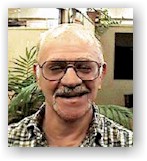April 2002 Issue
![]()
Management Strategies & Tips
By Frank L. Christ
Email: flchris@mindspring.com
 Tip
#20: Campus-Wide Publicity Through a County Fair-Like Event
Tip
#20: Campus-Wide Publicity Through a County Fair-Like Event
While at CSU Long Beach, I developed an activity to demonstrate the programs, services, and materials of the Learning Assistance Center to various segments of the campus community. The design and implementation of this activity was influenced by my visits to various county fairs where I had an opportunity to see and interact with exhibits that were focused on a basic theme. The LAC County Fairs were based on the programs and materials of the LAC.
To these scheduled county fairs, I invited faculty, administrators, department heads, student association presidents, resident hall advisors, fraternity and sorority leaders to send representatives from their group to the LAC to learn about its programs, services, and materials. Each fair was tailored to meet the needs of the group based on its stated interest in specific course related learning and study skills activities and materials. The sessions lasted about two hours and took place in the LAC. Each county fair focused on three to five stations at which one LAC program, service, or material was demonstrated.
A typical session was divided into three phases:
1)
an orientation to the session with an overview of its objectives and a
description of the activity stations that members of the group would be
experiencing. An activity station might be a description of an LAC program, a
demonstration of an instructional video, instructional software or a web site
that the LAC uses in assisting students to improve their learning strategies.
At the end of this orientation, the group was divided into smaller groups
(generally 2 to 4 members) that would rotate from station to station during the
session.
2)
Following this orientation, each group moved to its assigned station and
experienced the activity for a set time period, generally 10 to 15 minutes. At
the end of the time allotted, each group moved to the next station for the next
activity. A warning signal indicated that it was time to rotate.
3) After each group had been to all stations, participants regrouped for feedback, questions, and evaluation which was the final phase of the county fair.
The county fairs were successful in giving campus groups some hands-on experiences with the programs and materials that the LAC was using to assist students develop and improve their course related learning and study skills. In addition, county fairs gave the center increased campus visibility and recognition as an important academic support service.
*~*~*~*~*~*~*~*~*
